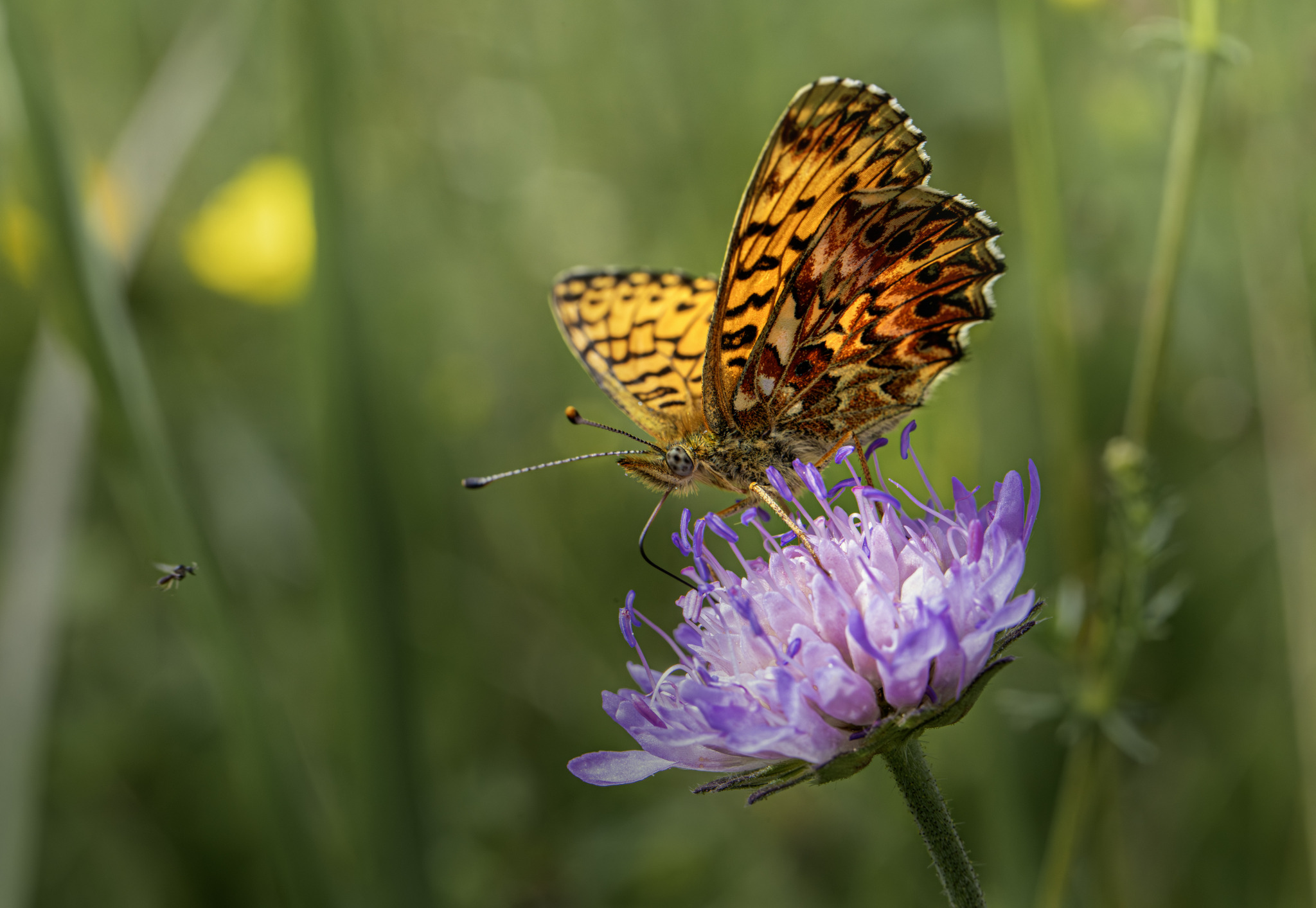Here’s a complete and well-structured overview of the Lesser Marbled Fritillary (Brenthis ino) — a beautiful butterfly of European and Asian meadows and wetlands.
🦋 Lesser Marbled Fritillary (Brenthis ino)
Taxonomy
- Kingdom: Animalia
- Phylum: Arthropoda
- Class: Insecta
- Order: Lepidoptera
- Family: Nymphalidae
- Genus: Brenthis
- Species: B. ino
Scientific name: Brenthis ino
Common name: Lesser Marbled Fritillary
Identification
The Lesser Marbled Fritillary is a medium-sized butterfly with a warm orange-brown coloration and marbled underwings, which distinguish it from other fritillaries.
- Wingspan: 36–46 mm
- Upperside:
- Orange-brown with dark brown or black spots and crosslines.
- Female generally darker and larger than the male.
- Underside:
- Hindwings beautifully patterned with pale yellow, cream, and violet-silver patches, giving a marbled effect.
- The distinctive violet sheen and pale spots help separate it from similar species such as the High Brown Fritillary or Dark Green Fritillary.
Distribution and Range
The Lesser Marbled Fritillary has a broad Palearctic distribution across temperate Eurasia.
Found in:
- Most of Europe (except Iberia and southern Greece)
- Scandinavia (up to northern Finland)
- Russia, Caucasus, Siberia, and northern Asia
- Japan (in the eastern range)
It’s common in northern and central Europe, but more localized in southern regions.
Habitat
Prefers damp, flowery meadows and wetlands with abundant host plants.
Typical habitats include:
- Wet meadows and marshy clearings
- Riverbanks and wet woodland edges
- Upland or montane meadows
Altitude range: from lowlands up to 2,000 m in mountains.
Behavior
- Flies from June to August, depending on latitude and altitude.
- Single-brooded (one generation per year).
- Adults are active in sunshine, often seen nectaring on flowers such as:
- Thistles
- Marsh woundwort (Stachys palustris)
- Valerian (Valeriana officinalis)
- Bramble (Rubus)
- Males patrol along sunny paths and meadows searching for females.
Life Cycle
1. Egg:
Laid singly on or near host plants, often on leaves or stems.
2. Larva (Caterpillar):
- Color: dark brown with lighter markings and small spines.
- Feeds mainly on meadowsweet (Filipendula ulmaria) and dropwort (Filipendula vulgaris).
- Overwinters as a small caterpillar.
3. Pupa:
- Suspended from vegetation, cryptically colored.
4. Adult:
Emerges the following summer, completing the annual cycle.
Host Plants
- Primary:
- Filipendula ulmaria (Meadowsweet)
- Filipendula vulgaris (Dropwort)
- Occasionally:
- Rubus spp. (brambles)
- Valeriana spp.
These plants typically grow in moist environments, matching the butterfly’s preferred habitat.
Similar Species
| Species | Key Differences |
|---|---|
| Marbled Fritillary (Brenthis daphne) | Larger, with darker orange tones and found in warmer, drier areas. |
| Niobe Fritillary (Argynnis niobe) | Larger with more distinct silver spots underneath. |
| Dark Green Fritillary (Argynnis aglaja) | Bigger, with vivid green tinge on the underwing. |
The Lesser Marbled Fritillary is the only Brenthis species common in northern Europe.
Conservation Status
- IUCN Status: Least Concern (LC)
- Trend: Stable to locally declining due to habitat loss.
- Threats:
- Drainage of wetlands
- Agricultural intensification
- Loss of flowery meadows
Conservation efforts focus on maintaining wet meadow ecosystems and traditional low-intensity grazing.
Ecological Role
- Important pollinator for meadow plants.
- Serves as prey for birds, spiders, and predatory insects.
- Indicator of healthy wetland ecosystems.
Key Identification Points
| Feature | Description |
|---|---|
| Scientific Name | Brenthis ino |
| Common Name | Lesser Marbled Fritillary |
| Family | Nymphalidae |
| Wingspan | 36–46 mm |
| Flight Period | June – August |
| Generations | 1 per year |
| Host Plants | Meadowsweet, Dropwort |
| Habitat | Wet meadows, marshes, riverbanks |
| Range | Europe and northern Asia |
| Conservation Status | Least Concern |
Interesting Facts
- The name “Lesser Marbled” refers to its smaller size and subtly patterned underwings compared to other fritillaries.
- Adults are often seen basking with wings half open in sunshine.
- Caterpillars emerge in late summer and hibernate without feeding, resuming growth in spring.
Summary
The Lesser Marbled Fritillary (Brenthis ino) is a charming butterfly of Europe’s wet meadows and river valleys, easily recognized by its warm orange wings and delicately marbled underwings. Dependent on meadowsweet and moist habitats, it thrives where wetlands are preserved. Once common across much of Europe, it now serves as a gentle reminder of the importance of protecting our natural marshlands and meadow ecosystems.
Views: 1438
Subscribe to the newsletter:
